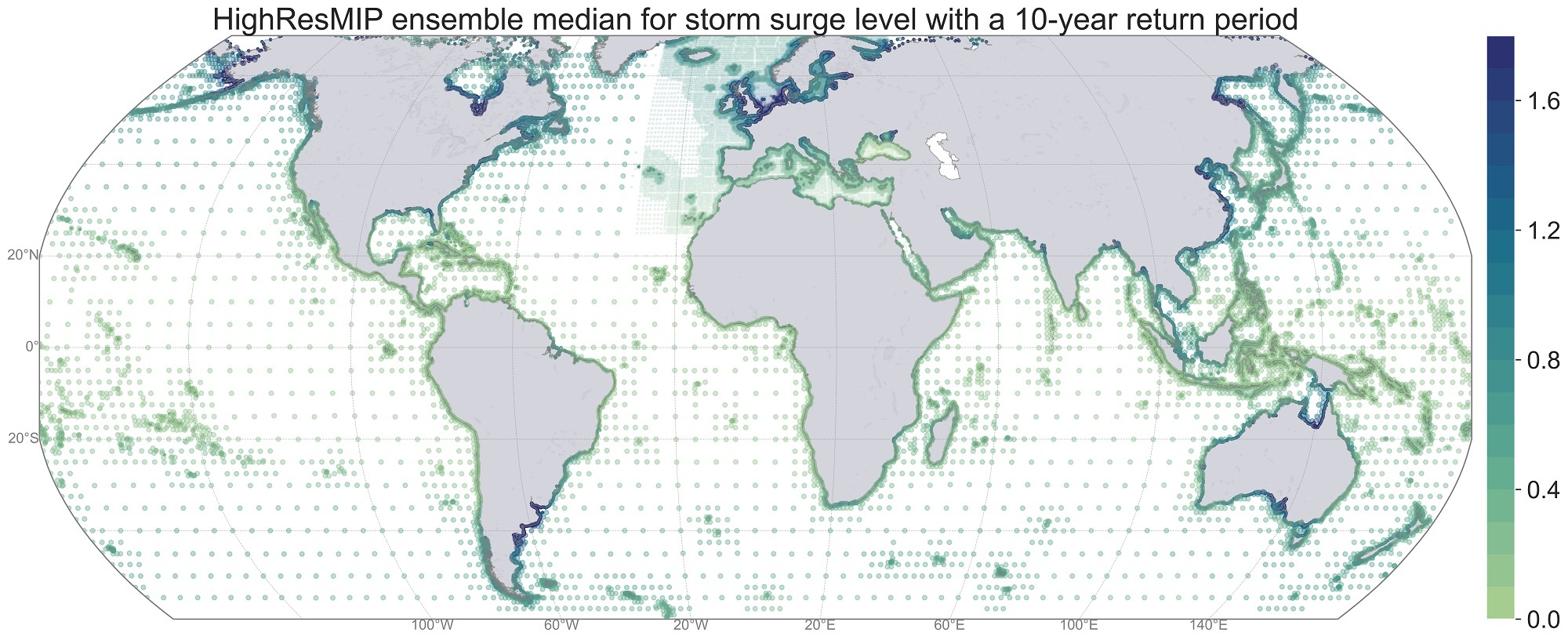Better understanding of storm surges in the future: the impact of a warmer climate
Due to rising sea levels and changes in storms, floods from the sea are expected to become more frequent in the coming decades. How the probability of a storm surge will change as a result of climate change has been studied by an international team, led by Deltares expert Sanne Muis and the Vrije Universiteit Amsterdam.

The team analysed storm surges that occur on average once every ten years. A comparison between the period 1951-1980 and 2021-2050 shows that storm surges can get up to 20 percent higher. This could contribute to increased flood risk. The research was recently published in Earth's Future.
"Our research contributes to a better understanding of storm surges in the future," explains Sanne Muis. "The use of advanced high-resolution climate models allows us to capture changes in storm patterns that were previously inaccessible. Although many questions remain unanswered, this work represents a leap forward. It shows that as a result of climate change, different regions may face greater variation in storm surge patterns. This is valuable information for communities, governments and organisations in making informed decisions about coastal development, disaster preparedness and resilient infrastructure."
Changes in storm surge levels
The team used the IPCC's latest CMIP6 climate projections to develop storm surge projections from 1950 to 2050. The Deltares Global Tide and Surge Model (GTSM) was fed with multiple climate models from the High Resolution Model Intercomparison Project (HighResMIP). Compared to the coarse resolution of the regular CMIP models (100-200 km), the HighResMIP models are much more detailed with a resolution of 25-50 km.
The validation over the period 1985 to 2014 shows good agreement between model output and actual weather data. However, the validation also shows large spatial biases, indicating that these are areas where the climate models do not accurately represent storm patterns. The study compares predicted storm surge levels for the period 2021-2050 with historical data from 1951-1980. These results show that changes can occur up to a maximum 20 percent higher storm surge.
Recommendation
In each part of the world, the change in storm surge patterns can be different. Some areas such as the Mediterranean, North Africa and South Australia could see lower storm surges, while others such as South Australia, Alaska, the northern Caribbean, East Africa, China and the Korean Peninsula could face higher storm surges.
The predicted changes are not large relative to the large climate variability, model errors and uncertainties in the analysis of extreme values. Future research is needed to better understand the causes of the model biases and seek specific causes for the change in storm surges.
As coastal communities prepare for increased flood risk due to climate change, these findings underscore the importance of potential changes in extremes. By using advanced computer models, as was done here, we can better understand how climate change can potentially affect coastal areas and thus make informed decisions for the future.

Access to research paper at Earth's Future
The full research paper can be accessed at Earth's Future. The data underlying the paper are fully open and available in the Climate Data Store (CDS), managed by Copernicus Climate Change Service (C3S). Time series are available here, and percentiles and return periods here. Although the paper focuses on storm surges, the full dataset also includes time series of total water levels and tides.
Collaboration
The research was produced through collaboration between Deltares, Vrije Universiteit Amsterdam, TU Delft, IHE Delft Institute for Water Education, University of Twente, USGS, KNMI, Mercator Ocean, Potsdam Institute for Climate Impact Research and Met Office Hadley Centre.




